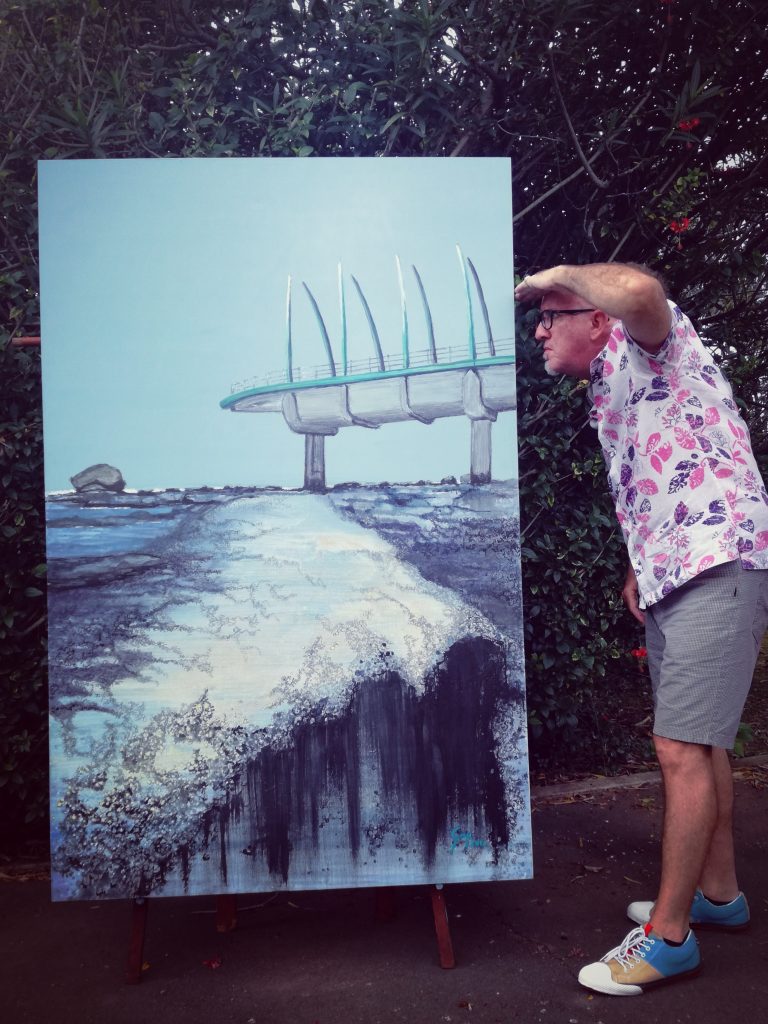Longevity, for Art’s Sake!
When creating art, many of us are driven by inspiration, emotion, and the immediate joy of expression. We reach for our materials (canvas, paper, charcoal, pastel, or paint) without necessarily thinking beyond the moment. Yet every artist, consciously or not, contributes to the continuum of creative heritage. The question then arises: will our work endure? Will the pieces we so carefully craft today stand the test of time, both in appearance and in integrity?
As we at North Coast Artists prepare for our end-of-year exhibition at La Lucia Mall in Durban it’s worth reflecting on this idea of longevity, not just of creativity but of craft. Our artworks are not merely aesthetic statements; they are physical objects subject to light, air, humidity, and handling. Understanding how to preserve them is an essential part of the artistic journey.

Longevity begins with what lies beneath the surface. The quality of materials used is the foundation upon which every lasting artwork is built. Paints, papers, pastels, and canvases are not created equal. The difference between student-grade and professional-grade materials often lies not in branding but in permanence.
For painters, the canvas is everything. Cotton canvases, though affordable, are more prone to sagging and environmental damage over time. Linen, by contrast, has long been considered the gold standard — it is stronger, more durable, and less reactive to changes in humidity. When primed with high-quality gesso, it creates a stable, archival surface that can last centuries.
For those who work in charcoal or pastel, the paper’s texture, composition, and weight matter immensely. Acid-free, 100% cotton papers, such as those made by Fabriano or Arches, resist yellowing and deterioration. Ordinary drawing pads, often made from wood pulp, contain lignin, a natural compound that breaks down and causes paper to become brittle and discoloured with age. Choosing archival paper may cost a little more initially, but it ensures that your drawings remain crisp and luminous decades later.
As well-known South African artist William Kentridge once observed, “Art is not a message. It is an exploration, an excavation of what remains.” Those words remind us that to preserve what remains, we must respect both the creative process and the physical matter that holds it.
Even the most carefully crafted artwork is vulnerable once it leaves the artist’s studio. Light, dust, and moisture are silent assailants. This is where framing becomes a crucial, often overlooked, final act of artistry. Recently, North Coast Artists were fortunate to learn from Tessa Pretorius, along with Crispin and Sandra Webb of Squared Framing in Umdloti, KwaZulu-Natal, professionals who understand that a frame is not merely decorative, but protective. They highlighted how museum-quality framing, when done correctly, can significantly extend the life of an artwork.
Acid-free mounts and backings prevent acid migration from cheap materials into the artwork, which can cause staining or fading. UV-resistant glass, and Artglass, though more expensive, blocks up to 99% of harmful rays that cause colours to dull and papers to bleach. Even the spacing between the artwork and the glass, known as the air gap, is important, especially for charcoal and pastel works, which should never be pressed directly against the glazing.
Tessa emphasised the importance of reversibility, that good framing should protect without permanently adhering to or altering the artwork. This principle ensures that future conservation or restoration remains possible, even generations later.
As artists, we are custodians of our creations. We owe it to ourselves, and to those who might one day inherit our work, to ensure that what we make will endure beyond our lifetime. This is not vanity; it is respect for the creative act itself. Longevity is part of legacy.
Artists often invest immense emotional and spiritual energy into their creations. But if the materials are weak or the preservation careless, even the most profound artistic statement can fade, literally and metaphorically, into dust. Taking the time to select quality materials, store works correctly, and frame them with care is not an indulgence. It is an act of artistic integrity.
As North Coast Artists move toward their exhibition at La Lucia Mall, this awareness becomes even more relevant. The public will view our works not just as images, but as physical manifestations of our craft. Ensuring that each piece is professionally presented, properly protected, and made to last elevates not only the individual artist but the collective reputation of the group.
There’s a quiet dignity in knowing that a work sold at an exhibition will still look as vivid decades from now as the day it was created. It affirms that we are part of something enduring, a dialogue across time between artist, material, and viewer.
In essence, the longevity of art is not a matter of luck or chance. It is the result of intention, knowledge, and care. As our community continues to grow, learn, and share expertise, from material selection to conservation framing, we honour both the art itself and the future it deserves.
So as you prepare your next piece for exhibition, take a moment to ask: Will this artwork still sing its song long after I am gone? If the answer is yes, then you have truly created something timeless.
Guy McGowan
Chairperson
